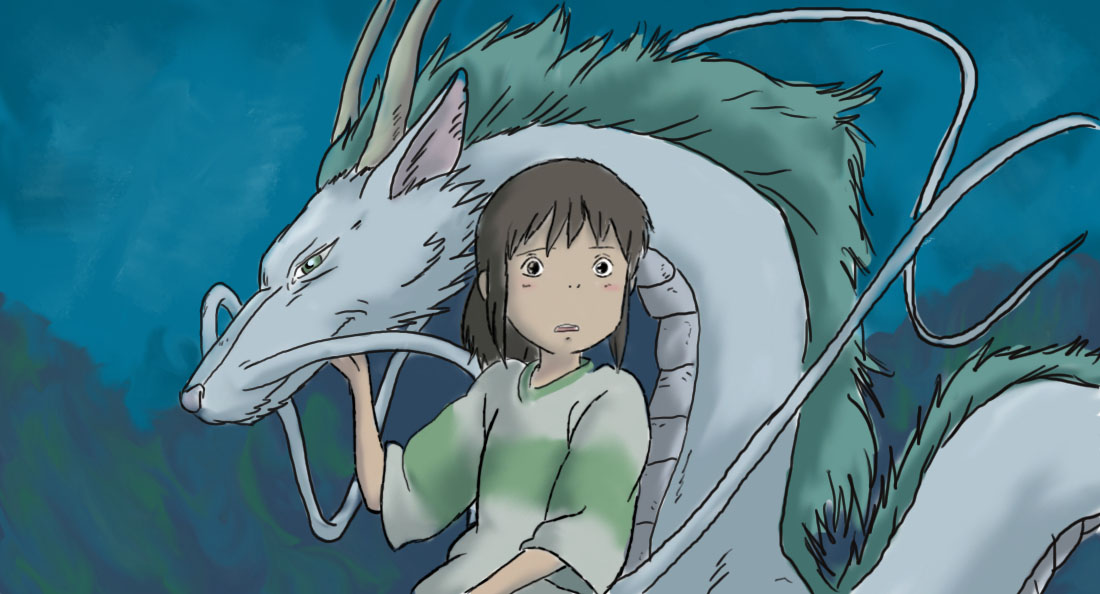Spirited Away, the popular Japanese animated film from 2001, was directed by Hayao Miyazaki and produced by Studio Ghibli. It is a film that, with beautifully scenic landscapes, engaging dialogue, strong, determined characters, and a moving, melodic soundtrack, has entranced a generation of children and adults alike and gained a beloved position in the hearts of many, Miyazaki fans or not.
A couple of weeks ago, an orchestra concert inspired by the film was held in Beijing’s Baoli Theatre, and while I was unable to physically attend this concert due to accidents that has made it difficult for me to walk about in the time being, my family has attended a similar event in the past and seeing the poster online made my memory reach back to the times I sat in front of a television, and later in front of a laptop screen, to watch and re-watch Spirited Away, amongst other Miyazaki and Studio Ghibli films. The memories of watching these films seem to wrap themselves around memories of time spent with those I watched them with, and recalls friends from different stages of my life growing up. Most of all, it makes me think of my sister, and her opinionated reactions to many of these films.
Although it is hard to recall the exact age at which we watched each of the following films, a rough guesstimate would place the time frame around an age range of 10-15 for me (and I still do not feel too old for them now), and my sister is roughly 3.5 years younger than me, so from 7 or 8 onward seems to be an acceptable age for these, although it’s helpful to keep in mind that while animated, there are scenes that are violent and gory and might scare young children.
Grave of the Fireflies (1988) was, or rather I should say is, although I’ve not revisited it in a long time, one of my favorite Studio Ghibli films. My sister absolutely hated it. The film chronicles the experiences of a young boy and his sister’s fight for survival during the Second World War in Japan. Although the animation is as always artistically admirable, and there are included peaceful, soft, and beautiful scenes, one cannot shy away from the subject matter of the film, which is dark, horrifying, and deeply saddening. Perhaps it is true that I’ve always loved reading tragedies, but even so, this is a film worth watching, although best save it for a day when you think you’re feeling too happy. What has stayed with me all of these years from this film are those little hard candies in those little tin cans, and the little bit of sweetness that they symbolized in a vast world of bitterness (you’ll see what I mean when you watch the film).
Whisper of the Heart (1995) is different from many other Studio Ghibli films in that it is very realistic, and arguably includes much fewer magical or supernatural elements compared to films like Spirited Away or Howl’s Moving Castle. It is the story of a young boy and girl in school, the development of their friendship, and their individual journeys to finding their path in the world. It portrays everyday life, although it does not let go of opportunities to explore youthful imagination. It highlights the uncertainty and fear that many experience when trying to step over the threshold between childhood and adulthood. It is a bildungsroman that includes both a storyline of young love, and how it feels to undertake the daunting task of taking responsibility for choosing and shaping who to become, which can be frightening and confusing for the best of us.
My Neighbor Totoro (1998) is a film that is younger than me and older than my sister. We watched it together when we were both very young—I recall that it was a Chinese dubbed version that we watched, since neither of us understand Japanese. In this film, two sisters move to the countryside with their father to be near their ill mother. As they explore the forests around their home, they’re met with spirits and creatures that you would never dream of seeing in real life. My memories of the specific storyline of the film is hazy, yet it can be recalled that there was a certain blending between a harsh reality and a soft fantastical world that was the opposite of jarring, but instead seemed to flow into one another such that what seemed to belong only in the imagination, lending itself to soften blows that could only be dealt by an uncompromising reality. While it includes themes that seem daunting and harsh for a children’s film, it teaches its audience to keep hold of strength and optimism in the face of hardship, a lesson best learnt earlier rather than later in life.

Spirited Away (2001) is perhaps one of Studio Ghibli’s best known films, and as it was adapted into an English-language version in a collaboration with Disney, I’ve found that if a native English-speaker were to know one Studio Ghibli film, it would often be this one. It is not for no reason. The story starts with a young girl on a road trip with her parents but she unwittingly stumbles upon a world where a curse is cast on the parents. The film subsequently documents the adventures of the young girl and how, through the help of others and her own persistence and bravery, she gets the curse lifted and takes her parents home. Spirited Away, while in so many ways being completely preposterous, communicates a message that seems impossible not to take seriously. It follows the arc of a classic hero’s journey archetype in which the heroine is thrown into a tumultuous and foreign world beyond that of the familiar and known, and in the unknown must find her own way. In the end, she brings back something intangible and invaluable to her everyday, mundane life—a deeper knowledge of what she is capable of, and a more profound understanding of the twists and turns of a human heart. The film doesn’t even let go of the opportunity to utilize the classic Lot’s wife reference at the end, just to tie it all together.
Howl’s Moving Castle (2004) has always been another old favourite. It is based on a novel by the British author Diana Wynne Jones, which I’ve had on my bookshelf for something like a decade probably. I knew of the novel when I was much younger, before I had even heard of the film. Hence, when I watched the film and realized the resemblance to the novel, it was startling. I’ve always wondered how Studio Ghibli got a hold of that particular book of all books and decided to make a film out of it. Although, in an undeniable way, it makes a lot of sense. The plot of the novel is exactly the sort of thing a Studio Ghibli film would be able to bring to life effectively, complete with magical spells and curses, talking flames, teleportation, and someone who can sprout wings—oh, and love. The name of the story is accurate, although not necessarily the center of the film, the story is based around a castle that moves, and the relationship between the owner of the castle and the film’s female protagonist. It is a story of how love can lift curses, old and new. The characters are portrayed with vivid colors while far-off scenes of meadows are drawn with a watercolor aesthetic. While not entirely light-hearted, it is still a fun watch. Another bonus—it’s theme song, “The Merry-Go-Round of Life” is absolutely lovely. You should listen to it on the violin.
P.S. If you’re already familiar with a lot of Studio Ghibli films here’s a quiz from The Guardian that you might find entertaining.
Pictures: deviantart.com, Sogou,




